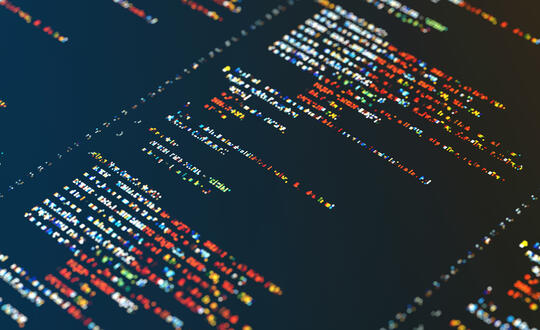
The Supreme Court has unanimously confirmed that an AI cannot be an 'inventor' for the purposes of holding a patent. The Supreme Court[1] upheld the Court of Appeal decision and dismissed the appeal on whether an AI machine can qualify as an 'inventor' for the purposes of the Patents Act 1977 (the Patents Act). This is another key decision impacting AI inventorship. It highlights the business need for proper policies and inventories to avoid uncertainty when determining the inventor.
Background
Dr Thaler submitted two patent applications to the UK Intellectual Property Office (UKIPO) under which his Artificial Intelligence (AI) machine 'DABUS' was stated to be the 'inventor'. Dr Thaler said his ownership of DABUS gave him the right to pursue a patent application in relation to the invention. On review of the applications, a UKIPO hearing officer confirmed that s.13(2) of the Patents Act required Dr Thaler to identify a 'person' as the inventor and to set out how he had derived his right to be granted the patent from that 'person'. Therefore, the s.13(2) requirements were not satisfied and consequently his applications were withdrawn.
Since then, the High Court, Court of Appeal and most recently the Supreme Court have ruled against Dr Thaler, upholding the decision of the UKIPO hearing officer. In doing so, they made it clear that the current UK patent framework could not recognise an AI machine as an inventor.
Alternatives
The core of the judgment is that patents can only be "granted or transferred to persons with legal personality" [72] and that "DABUS was not and is not a person," not satisfying the requirement under s.7 of the Patents Act. As Dr Thaler submitted the application on the basis that DABUS was the 'inventor', the UKIPO Handling Officer rightly ended the progression of the application here. The simple alternative here is to ensure that the application is made on behalf of a living entity, namely to register the person or entity running the AI or who fed certain prompts to the AI to achieve the invention as a result. However, it is not clear whether this would satisfy the UKIPO, and in the event it failed to do so, the courts.
Changes to the current system
Court of Appeal judge Elisabeth Laing LJ commented that on the implementation of the Patents Act, it is clear that the capability of machines to devise inventions was not a consideration when enacting the current legislation. This statement can be applied to the majority of European legislation in this area. She noted, "if patents are to be granted in respect of inventions made by machines, the 1977 Act will have to be amended."[2]
Since the enactment of the Patents Act, technology and its capabilities has developed further than many of us could have imagined. However, with the rapid expansion of AI and other autonomous machines, the future landscape of the legislative framework for patentability is being considered by policy makers world-wide. The US has been considering this, as evidenced by the Biden administration's Executive Order addressing inventorship and the use of AI within this process. This is suggested with the aim of helping increase the protections of both inventors and creators.[3]
In the Thaler case, the Supreme Court did not pass judgment on whether a person could claim to be an inventor where AI was used in the invention process, nor on whether inventions generated by AI and other highly sophisticated technologies could or should be patentable. This is therefore an open question for legislators to decide.
Patent application misuse
There has also been historic misuse of the current patent system. For example, many patents are granted to businesses who make wide-ranging applications with no actual intention of creating the patented inventions. The applications are submitted in the hope that an inventor will subsequently create the patented design and then must pay a fee to use the already-registered patent.
The use of AI to assist this seeming abuse of the patent system would only aid in stifling new creativity and deny actual creators of the invention both credit and protection. However, the Thaler decision could increase transparency as where AI is able to be an 'inventor' in its own right, this will disable people from taking credit where it is not due. In any event, a balance must be struck between devaluing human inventorship through the use of AI, against the incentivisation of using AI for innovation where its effectiveness goes beyond human capabilities.
Conclusion
The current UK legislative system in relation to patents is in need of updating to reflect technological advancements and the continuous interaction between humans and AI, especially where there is a growing call to allow patents to be granted in favour of AI machines in the future. Any changes to patent law should also aim to deter businesses from misusing patent applications by making large numbers of applications (which may in future be assisted by AI) with the aim of selling or leasing the patent to the true owner for a profit.
Practical actions when using AI
Where AI is currently being used as a tool in the inventing process, practical steps can be taken so that a patent application would be more likely to succeed. These steps include:
- ensuring appropriate employment policies are implemented by businesses to set clear and definitive boundaries around the use of AI in day-to-day business activities. This should include, where necessary, an obligation on users to record who owns any new ideas generated by the AI
- routinely documenting the steps and prompts used when programming and working with any AI or computer, as well as how, when and by who these are fed to the AI. A clear paper-trail of the events leading to an invention by AI would allow the responsible person to indicate the derivation of the right to make the patent application, which is sufficient in the eyes of the court.[4] This should also assist in demonstrating the level of human contribution made to such invention.
Should you wish to discuss any of the issues covered here, WBD has a dedicated team of intellectual property lawyers with significant experience of helping our clients protect, maximise and monetise their technology and intellectual property assets, as well as advising clients on resolving patent disputes in UK, US and EU courts and patent offices. WBD also have a joined up digital team who can help your business adapt and thrive in a digital landscape.
---------------------
[1] In Thaler v Comptroller General of Patents Trade Marks and Designs [2023] UKSC 49
[2] Thaler v Comptroller General of Patents Trade Marks and Designs [2021] EWCA Civ 1374 [103]
[3] "Safe, Secure, and Trustworthy Development and Use of Artificial Intelligence" (30 October 2023)
[4] Thaler v Comptroller General of Patents Trade Marks and Designs [2023] UKSC 49 [37]
This article is for general information only and reflects the position at the date of publication. It does not constitute legal advice.





